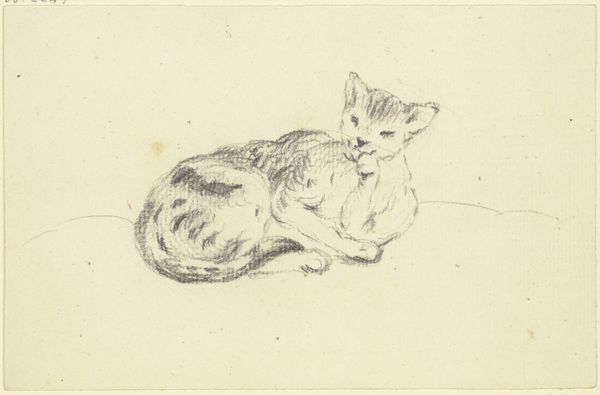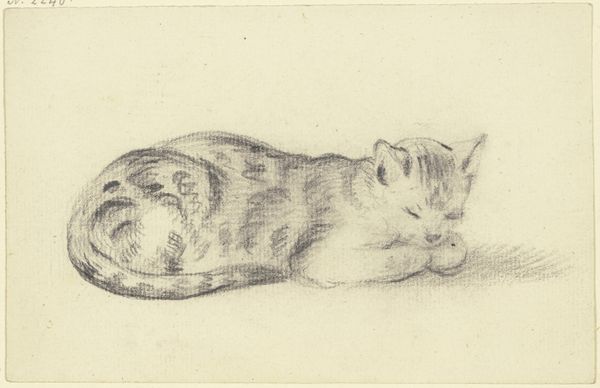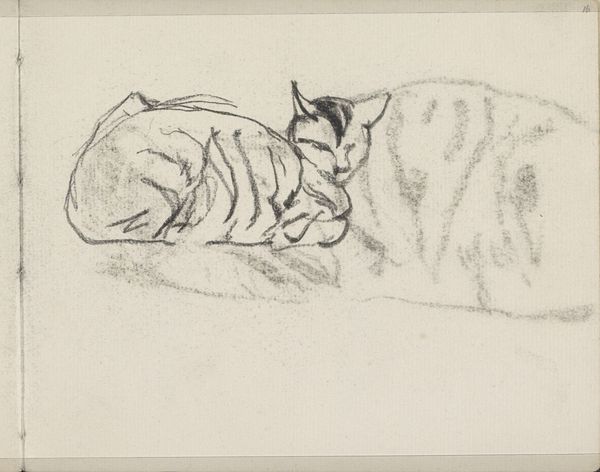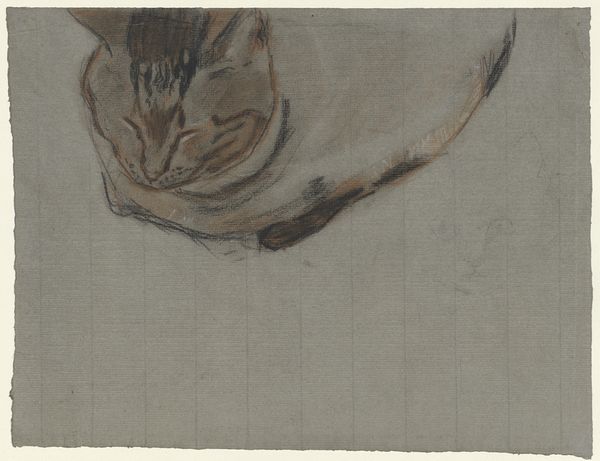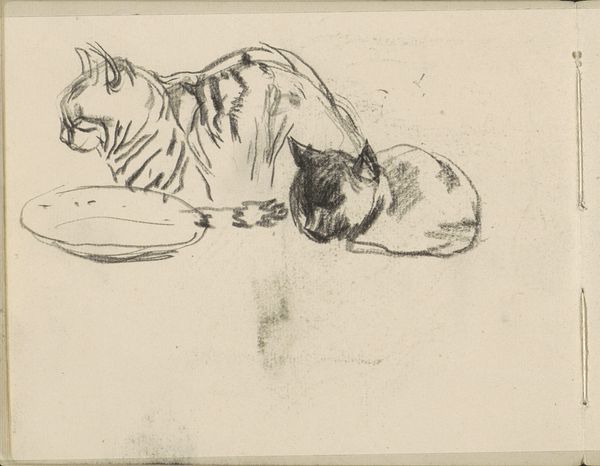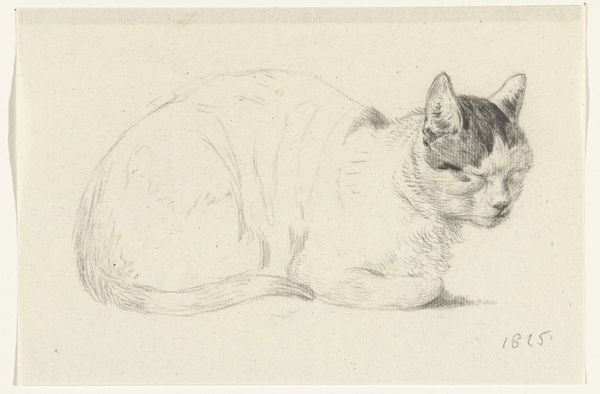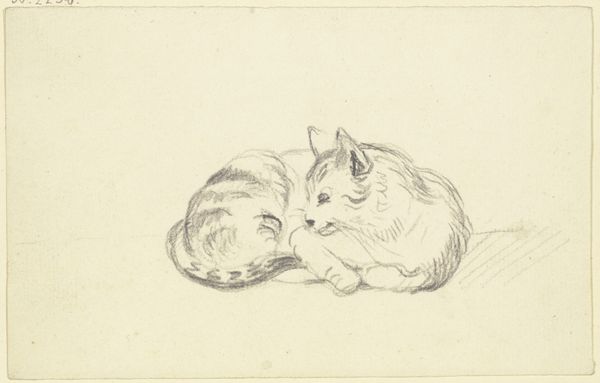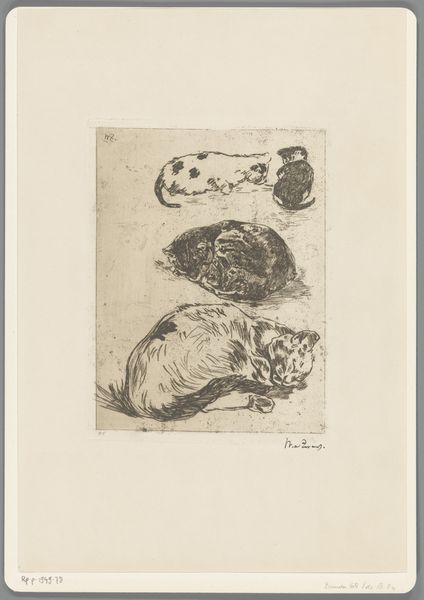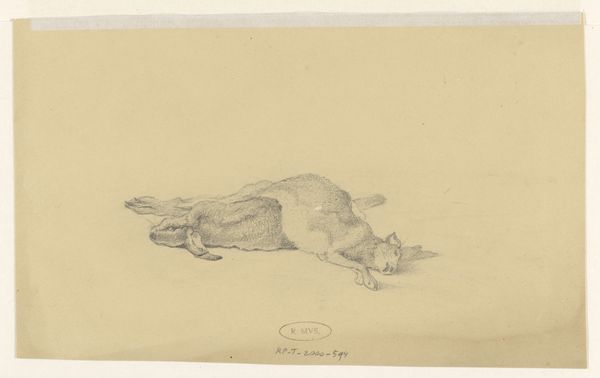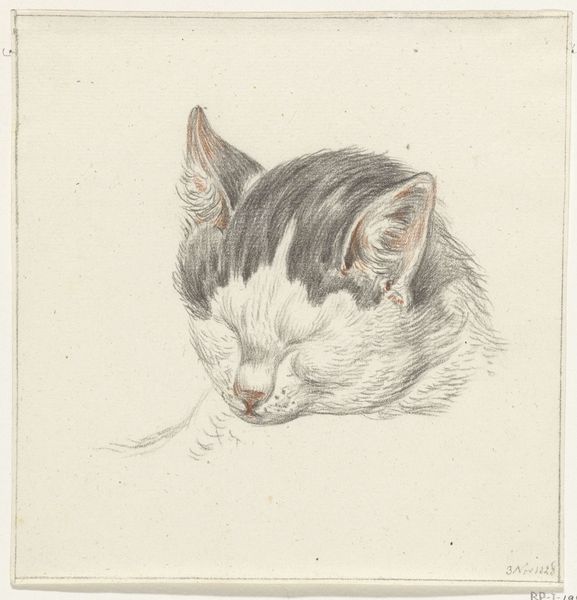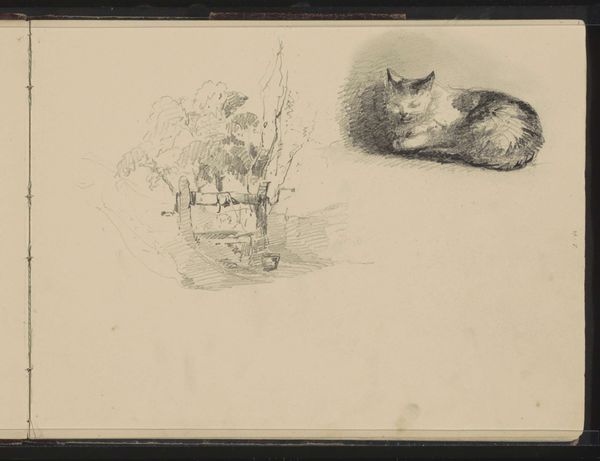
Weiße Katze, schwarz und rotbraun gefleckt, mit ihren drei Jungen, die mit einer Maus spielen
0:00
0:00
drawing, painting, paper, watercolor
#
portrait
#
drawing
#
animal
#
painting
#
paper
#
watercolor
#
romanticism
#
genre-painting
#
watercolor
Copyright: Public Domain
Curator: Look at this sweet family scene. Gottfried Mind created this watercolor drawing, its title in English translates to "White Cat, spotted black and reddish brown, with her three young playing with a mouse". It is currently held in the Städel Museum collection. Editor: It’s charming, certainly. I’m immediately struck by its simplicity, almost starkness. The animals are rendered with delicate detail against what looks like bare paper. There’s an air of vulnerable domesticity. Curator: It is vulnerable! Mind lived a life withdrawn from society. Art historians have connected his unique dedication to drawing animals, especially cats, with the political context in early 19th century Europe, understanding the work through a framework of disability studies and challenging social conventions that excluded disabled persons. His sensitivity towards animals could then be understood as extending beyond pure naturalism. Editor: That’s fascinating, situating his choice of subject matter within broader historical dynamics of social exclusion. How might the museum's display of such artwork impact the viewer's understanding of social biases present even today? Is the museum fulfilling a responsibility of prompting social dialogue through historical reflection? Curator: Absolutely, Gottfried Mind himself was regarded for much of his professional life as intellectually disabled, the social norms for how those labelled “idiots” and “the mad” in that era should live shaped his artistic trajectory and reception. This context informs my reading of this very scene: Is there something inherently political in depicting an image of unconditional nurturing in a society that often withholds care from its most vulnerable members? Editor: It adds depth to what could easily be dismissed as sentimental. Thinking about institutions, too—the way art is collected, interpreted, and then presented plays such a significant role in solidifying particular narratives, no? This piece reminds us of the power art has to act as a gentle act of defiance when given the opportunity. Curator: Indeed, and reflecting on it, I hope to hold on to a new sensitivity myself, especially toward the portrayal of familial bonds often under-represented within intersectional discourse. Editor: Agreed. I’ll certainly be pondering the public and curatorial role this artwork plays in a contemporary setting long after we leave it here.
Comments
No comments
Be the first to comment and join the conversation on the ultimate creative platform.

